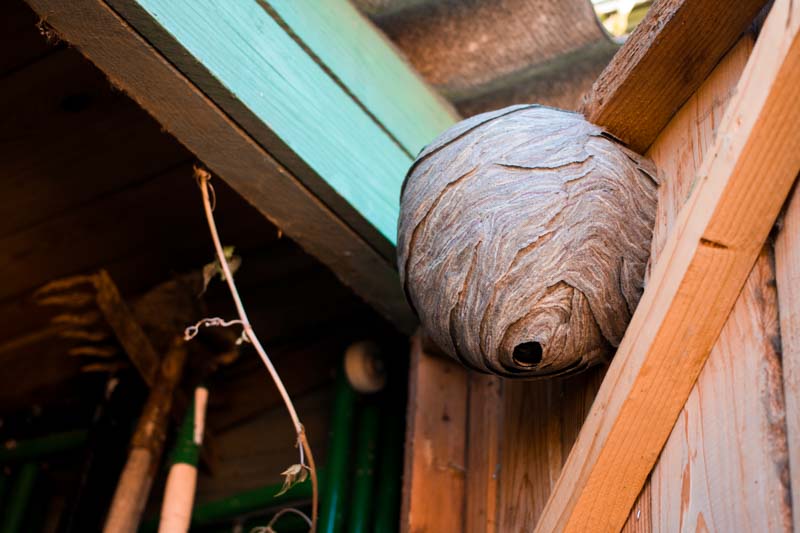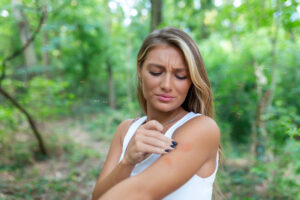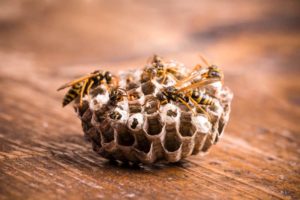Discovering a wasp nest on your property can be overwhelming. Small nests may be easily removed or even quickly abandoned. But what happens if you have a much larger nest on your hands? Can you remove it yourself or should you call a professional? Get the information you need to make wasp nest removal as simple as possible.
How to SPOT a Wasp Nest
The obvious first step in wasp nest removal is finding the nest. Sometimes, it will be incredibly obvious! Other times, you’ll only notice an uptick of stinging insects while you’re outside. You might need to look around to find the nest.
Types of Wasp Nests
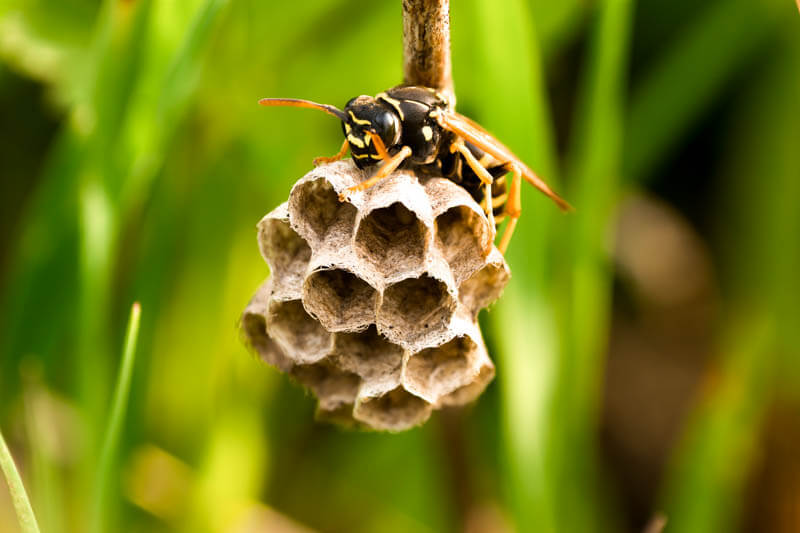
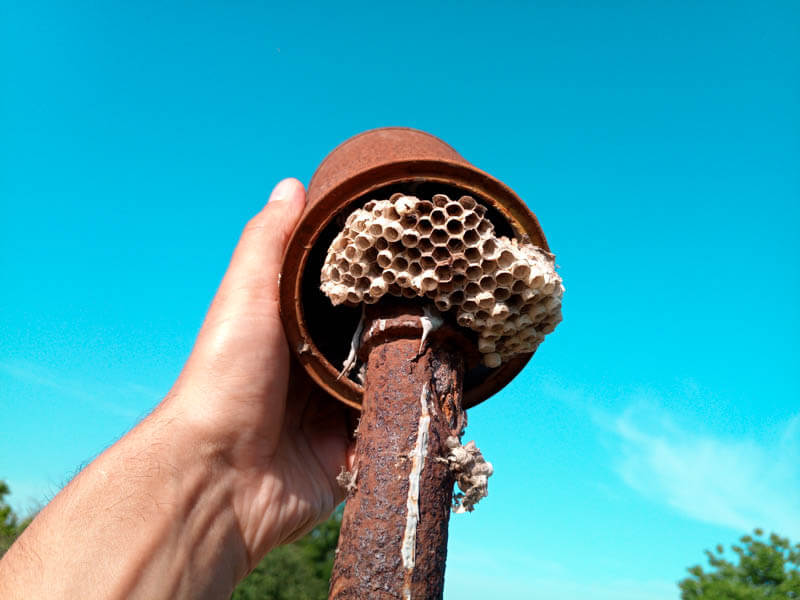
Hornets and yellow jackets both make aerial nests. These are the stereotypical, large nests you’ve seen depicted hanging from trees. Chewed wood fibers and saliva combine to form an almost paper-mache exterior. Along with tress, this oval-shaped nest can also be seen hanging from eaves, abandoned doorways, or other tall structures.
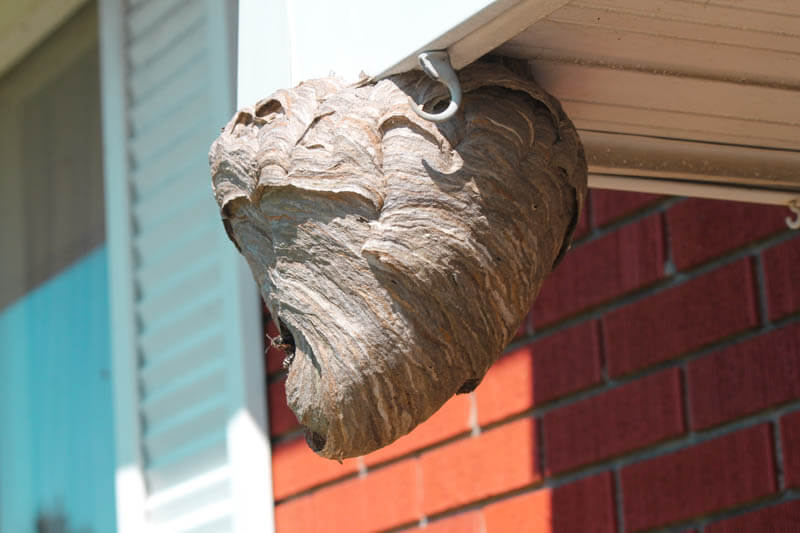
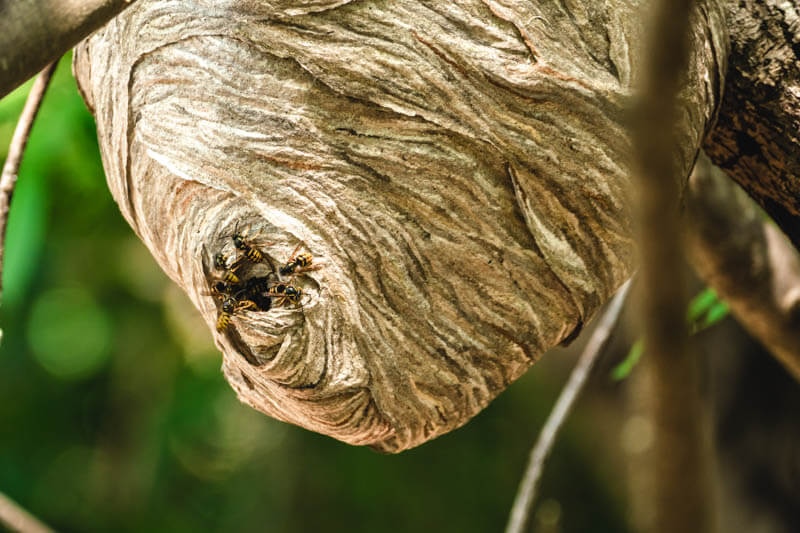
Yellow jackets also make ground nests. They can be anywhere between two inches to two feet below the surface. To find the entrance, look for a hole surrounded by a small pile of dirt. Usually, these nests are located in sandy, well-drained soil. Popular spots are near plant roots, fallen timber, and pre-existing holes.
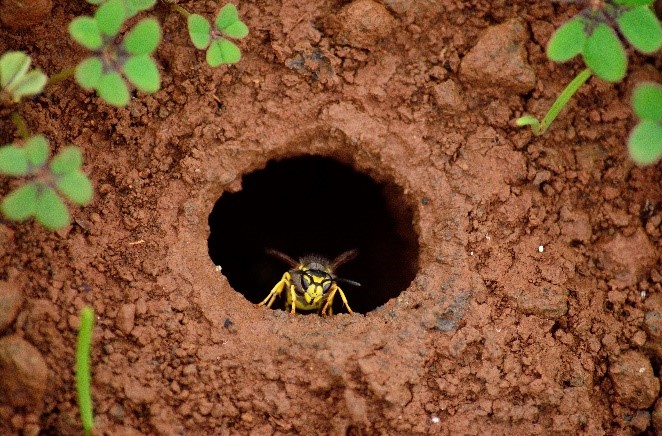
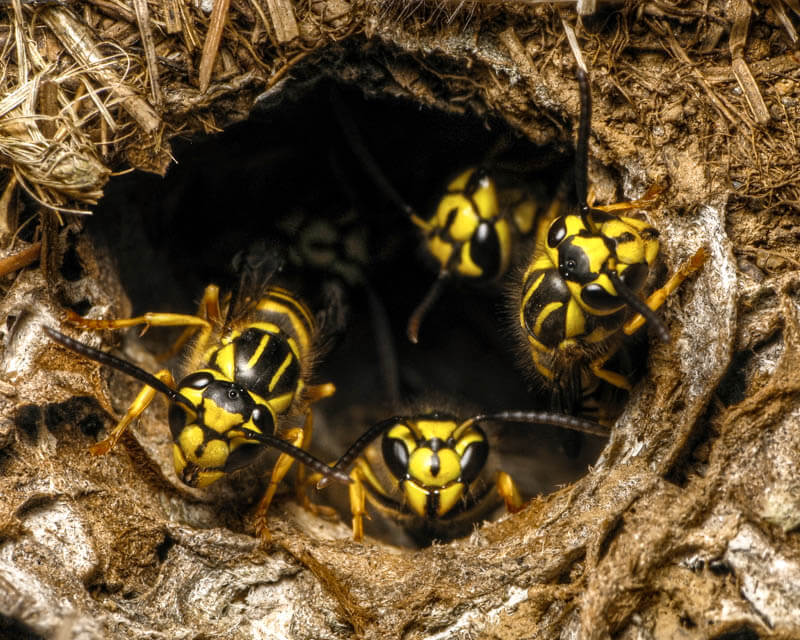
Noticing Wasps and Bees
But if you’re noticing wasps, hornets, or yellow jackets, take extra precaution. They’re aggressive! Cautiously try to follow the insect to their nest. You may find that a group of paper wasps have made their home in a gap in your siding. Or perhaps, yellow jackets took over a hole in your garden.
If you want to learn more, we have plenty of articles on identifying stinging insects.
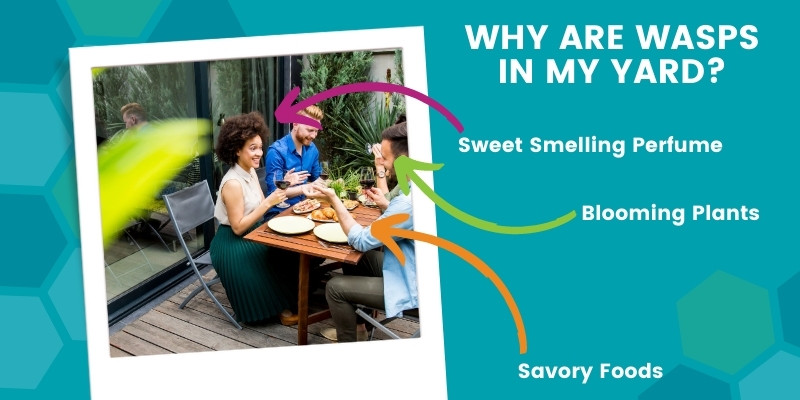
WHY ARE WASPS IN my YARD?
If you’re looking up information on wasp nest removal, it’s also important to consider why the wasps are in your yard. You might be doing things that entice wasps! With a few changes, you could see significantly less pests at home. Here are a few questions to ask yourself.
Do you have a bird feeder? The scent can attract stinging insects. Try placing the bird feeder in a corner of your property.
Are you eating sweet and savory foods? If you notice an uptick in wasps while trying to dine in your backyard, the food itself may be the culprit. Try applying peppermint oil or lighting a citronella candle.
Are your trash cans sealed shut? If you accidentally leave your garbage can open, or it is damaged, wasps will be drawn toward the scent.
Learn more with this helpful article on preventing wasp nests.
Wasp nest removal Steps
If you feel comfortable attempting to remove the nest yourself, you can. Local stores should carry a “wasp and hornet killer” or insecticide. Spray the nest at least 24-hours before attempting to remove it. Then, check out the nest at night. If there are no wasps, you can go ahead with removal.
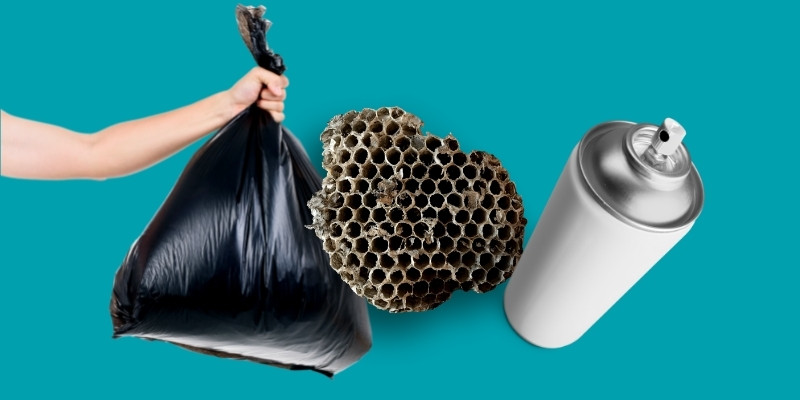
- First, grab a garbage bag.
- Use it to cover the nest and pull it away from the wall or tree.
- Then, secure the bag with the nest inside, placing it in your outdoor trash can.
We highly suggest you think through a few safety measures before attempting this project. When stung by a wasp, it is important you remain calm and quickly remove yourself from the area. If this happened to you, where would you go? Deciding on a location now will make your response to an emergency faster. Also, you can keep a first aid kit in this pre-determined location.
If you ever suspect you are experiencing a severe allergic reaction, don’t hesistate to call 911! Otherwise, do your best to treat your bee sting at home, and follow up with an allergist with any concerns.
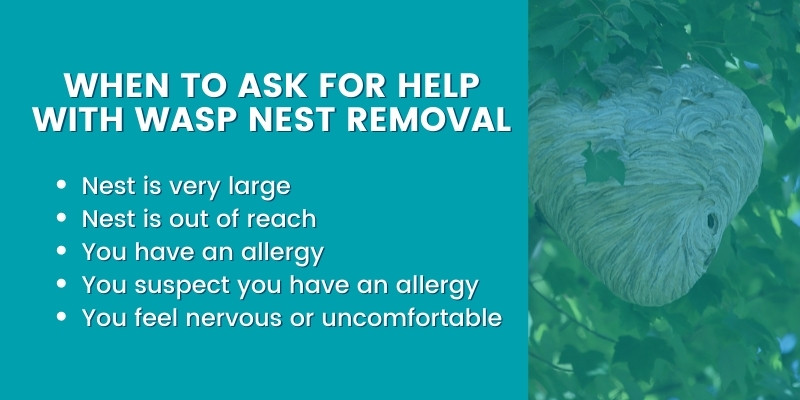
ASKING FOR HELP REMOVING A WASP NEST
Some wasp nests are too large or too out-of-reach for you to remove yourself. In these cases, it’s best to call a local pest management company. These professionals will have the best tools and skills to take care of the job.
Another reason to not remove a nest yourself? If you have a wasp allergy! Even if you slightly suspect you have an allergy, or have been stung recently, you could be at risk for anaphylaxis. It’s better to ask for help than experience an emergency.
Lastly, it is possible for wasps to nest inside your home. This is another scenario where you should call for help.
What Happens When You Contact A Pest Control Company


Find a Local Allergist
If you think you have a bee sting allergy, don’t wait for an emergency. Instead, talk to an allergist about testing and venom immunotherapy.


